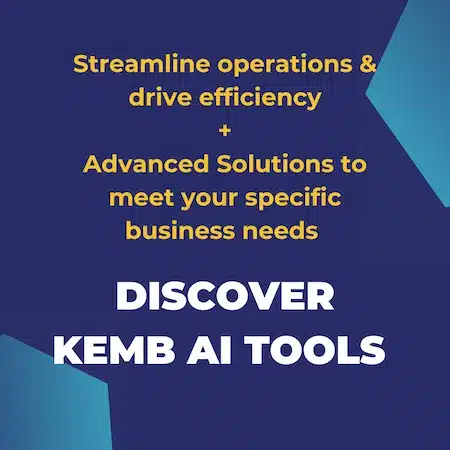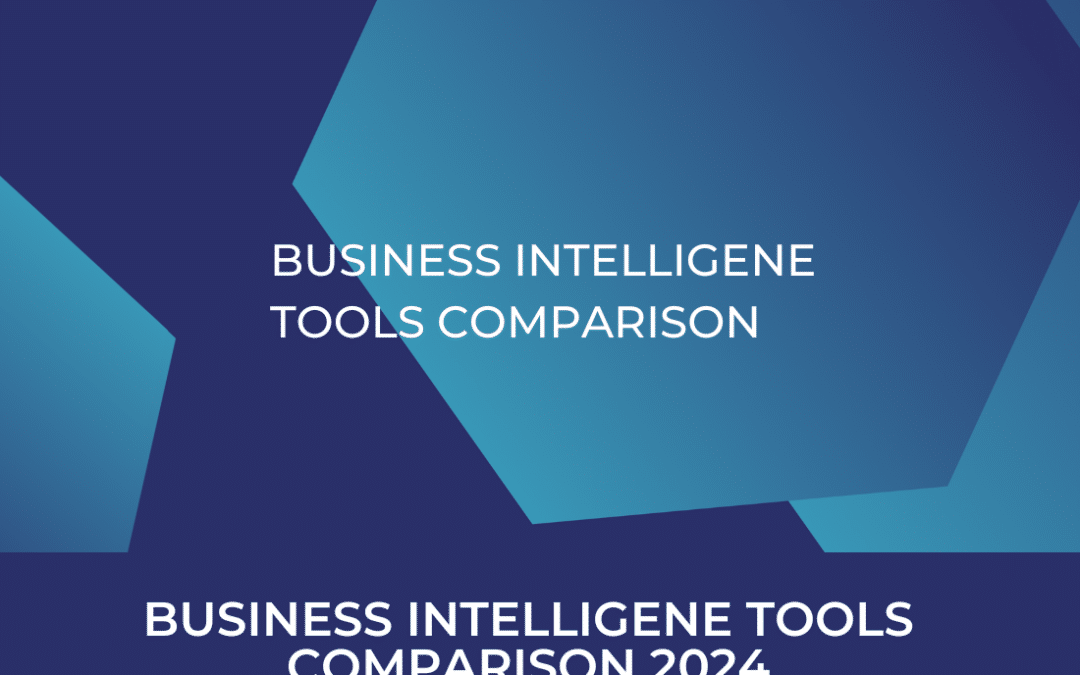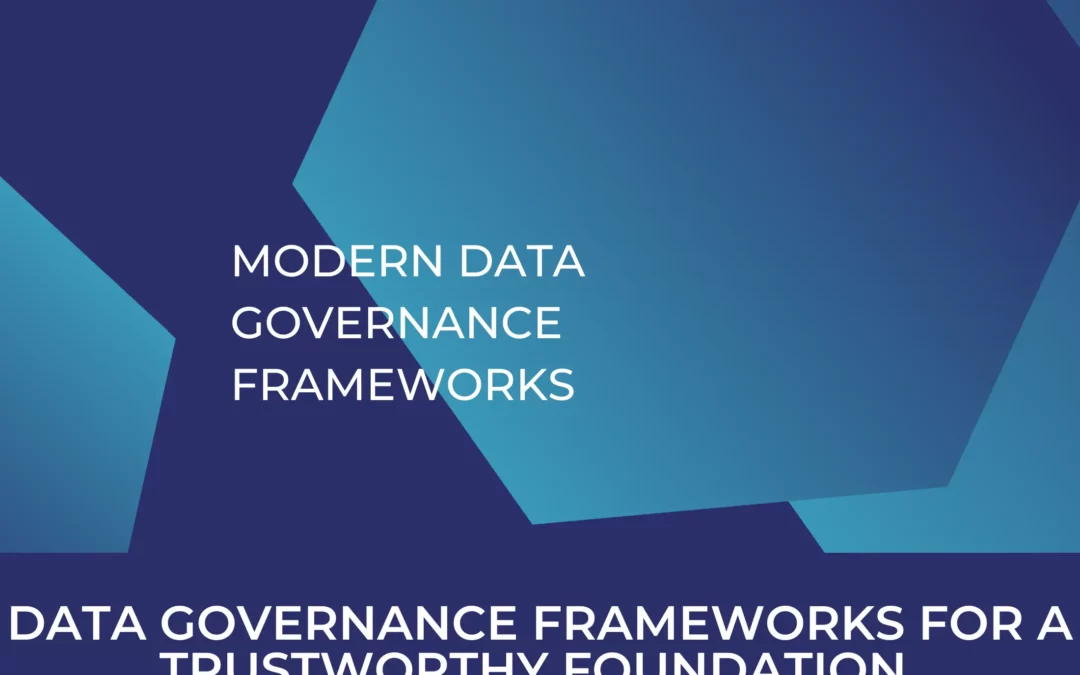Exploring the Power of Generative AI in 2024
A Comprehensive Analysis
As a data analyst at kemb, where we support our clients in business intelligence, marketing and data-driven growth strategies on a daily basis. In this context, I’ve had the unique opportunity to explore the vast potential of generative AI, since our team has integrated AI into various aspects of our operations over the past year. In this article, I’ll share a detailed analysis of our experiences, highlighting the advantages, disadvantages, use cases, and future potential of AI tools. Whether you’re considering AI for your business or just curious about its impact, I hope to provide valuable insights and perhaps pique your interest in embarking on your own AI journey with us.
Table of Contents
The Good: Advantages of Generative AI
Generative AI has significantly enhanced our efficiency and opened new avenues for innovation in many areas. Here are some of the key benefits we’ve experienced:
1. Automation of Repetitive Tasks
Keyword Clustering:
Using tools like BERTopic, we’ve automated the grouping of thousands of keywords, which was previously a manual and time-consuming process. This has greatly improved our SEO strategies. However, keyword clustering still requires manual adjustments to achieve optimal results. The AI performs well in comparing competitors, but human expertise still remains crucial for refining clusters and ensuring accuracy as it might be specific for certain companies. Nevertheless, AI can provide excellent support here and contribute enormously to efficiency, especially in large projects with thousands of keywords.
AI Product Description Generation
Leveraging the Generative AI Vision API from OpenAI, we’ve automated the process of describing products based on images. This task, which once took hours, can now be completed in minutes with consistent accuracy. Yet, crafting precise prompts is essential, especially when images contain multiple objects. The AI needs clear instructions to identify the correct product in the picture.
AI Title and Meta Description Generation
We have developed a number of apps to help us quickly transform project descriptions and product images into well suited product titles with meta descriptions. We have also modified the app to take more relevant information into considerations and create the titles based on individual requirements.
Classification and tagging:
We have also developed apps that quickly take and classify products based on certain classes or tags we can provide them or use the algorithm to classify without any predefined tags. This works exceptionally well for multiple tags or just a single one that with all automated task using generative AI human supervision is still needed to validate the results yes not all queries perform as for you want them to all the time.
2. Enhanced Data Analysis
Customer Feedback Analysis:
AI tools have allowed us to analyse vast amounts of customer feedback quickly. Sentiment analysis helps categorize feedback, providing actionable insights without the need for extensive manual effort. The tasks AI can perform in customer feedback analysis or data extraction are highly detailed and significantly more efficient than manual methods. However, precision in prompts and continuous human oversight remain critical.
3. Improved Productivity
Research and Ideation:
AI serves as a sparring partner for brainstorming and refining ideas, providing quick access to information and suggesting innovative solutions.
GTP development:
We have also used GPT in open AI to automate manual task like landing page creation scripts and other generative task.
It has only just begun
These are just a few examples of various applications we have used generativity AI to enhance our productivity and we would like to share them with you. We’re excited to hear what you think, and of course it’s free of charge! So whether you’re setting up an online shop with hundreds or thousands of products, managing a blog, or handling large-scale content projects, we believe that solutions like these can be extremely helpful in scaling processes that were previously very time-consuming. By generating meta titles, descriptions, and more, it can save you time and effort. Give it a go for free and explore its capabilities directly under TOOLS.WEAREKEMB.COM. We’d love to hear about your experiences and how it benefits your projects. Dive in and let us know what you think.
Challenges and Limitations
While the advantages of generative AI are impressive, we’ve also encountered several challenges and limitations:
1. Performance and Variability
Inconsistent Results:
AI models like those from OpenAI can sometimes deliver inconsistent results. This variability can affect the reliability of automated processes, requiring constant monitoring and adjustments. By well drafted prompts that include many different scenarios and explains the problem well most of this problem can be solved with integration.
Downtime Issues:
AI systems occasionally experience downtimes, which can disrupt workflows and lead to inefficiencies. You may have also experienced when the models what answers they give you seem to get dumper or they do not comprehend your questions as on other occasions. This problem will likely be overcome with more experience from the companies and the machine intelligence of comprehending natural language will further increase. Yeah
Specification:
Be very specific in your requests and in the task which needs to be fulfilled. Too many tasks at the same time or too much input will hinder great performance. LLM are designed to handle all kinds of different tasks that make them general and multi-purpose, but they perform better when limiting 1 task at a time. For example, if you ask to explain a very detailed technical issue it will perform good but if you ask about multiple topics it will perform worse for each in the output.
This specification is one reason we want to be very specific in the prompt design. Some prompts can be as long as one page or more. We can include and exclude instructions and specify all kinds of different standards the algorithms have to be aware of.
2. Ethical and Privacy Concerns
Data Security:
Ensuring the secure handling of sensitive data is a major concern. We must be vigilant about data privacy and compliance with regulations to prevent unauthorized access and misuse. We have to be aware that the input we use needs to be processed by the algorithm of these companies.
Bias in AI Models:
AI models can inadvertently perpetuate biases present in their training data. Mitigating this requires careful oversight and continuous refinement of the models. Even bias prevention methods might decrease the performance and have unintended consequences as could be seen with Google and the image generation.
3. Technical Limitations
Token Limits:
Current AI models have limitations on the amount of text they can process at once. This can be a constraint when dealing with large datasets or long documents. In most cases this is not an issue since the context window is very large.
Internet Connectivity:
Many AI tasks rely on internet access to fetch information. Inconsistent connectivity can hinder this process, especially when accessing real-time data. In general, the access to Internet sources does not work very well so we need to limit our application to be independent of this. A method that adds some complexity to the algorithm but solve this issue are tools especially function calling and using AI agents in combination with that. Some tests we have already done yielded promising results into those two options.
Testing and iteration:
These are of course most important aspects while working with such new algorithms like transformer models since they were not available too long ago and many uncertainties remain. Scientists are still in the process of exactly figuring out why you those tools work as good as they have since this came as quite a surprise to all of them. Many tasks that we might handle using large language models have not been done before on many occasions or at all especially when they regard very specific tasks. Why the performance has to be morning torch especially in the beginning and adjusted.
4. Model Performance and Costs
Different AI models have varying performance levels and associated costs. Currently, we are testing models from several companies to determine which works best for specific tasks. Established players include OpenAI with its GPT API, Google’s Vertex AI, Llama from Meta and Claude from Anthropic. Additionally, more companies are training their own models, adding diversity to the AI landscape. We have almost every month new models that claim to surpass their former models and competition significantly.
Future Potential: What Lies Ahead
The future of generative AI is incredibly promising, with several exciting developments on the horizon:
1. AI Agents for autonomous task management: AI agents capable of handling complex, multi-step tasks collaboratively. For example, in content creation, different agents could manage research, drafting, and editing processes.
2. Enhanced Integrations: Google Workspace and Microsoft Office: AI tools like Duet AI and Copilot will become more integrated with everyday business tools, making advanced AI capabilities accessible to non-technical users.
3. Scalability Improvements: Larger Token Limits: Future AI models will be able to process larger amounts of text, overcoming current limitations and enabling more comprehensive data analysis.
4. Tools: Many frameworks consistently develop better tools to search the Internet, connect two different services or other API and offer more flexibility for creating complex and smarter AI systems.
5. Ethical AI Development ohh
-
Bias Mitigation: Continued efforts to address and reduce biases in AI models, ensuring fairer and more accurate outcomes.
-
Data Privacy Enhancements: Improved protocols for handling sensitive data, ensuring compliance with stringent privacy regulations.
-
Practical Advice for Businesses
For businesses considering the adoption of generative AI, here are some practical tips based on our experiences:
1. Start Small: Begin with specific, manageable projects that can demonstrate clear benefits and return on investment.
2. Prioritize Data Security: Implement robust data security measures to protect sensitive information and maintain compliance with regulations.
3. Monitor and Refine: Regularly review the performance of AI applications to identify and address any issues promptly.
4. Understand Model Capabilities: Different AI models excel at different tasks. Testing various models from different providers can help determine which is best suited for specific needs.
Conclusion
Generative AI is more than just a technological buzzword — it’s a transformative tool that can significantly enhance business operations. From automating internal processes to developing innovative client solutions, AI has the potential to drive efficiency and growth. By addressing challenges and prioritizing ethical considerations, businesses can fully harness the power of generative AI.
Our journey with AI at kemb, as well as my very own, has shown me that integrating these technologies requires strategic planning and a willingness to adapt. With the right approach, generative AI can become a powerful ally in navigating the complexities of today’s business landscape. Integrative generative AI and other AI tools is significantly more complex than many articles claim. Real world scenarios from companies are always more complex and need individualized integration. If you’re curious about learning more about AI and how it can assist with your specific business needs, we’d be happy to schedule a call to discuss ideas and possibilities with you.





